Shop sim racing equipment
[adinserter name=”Next Level Racing”]
[adinserter name=”Elgato”]
[adinserter name=”Fanatec”]
[adinserter name=”GT Omega”]
A flying visit to the Gran Turismo World Series World Finals generally provides insight into the future of the popular driving video games series.
The event is not only used to determine the peak of virtual driving skill but, historically, a launchpad designed to promote the next set of Gran Turismo 7 content, updates and features.
This year’s event, held in the Theater Amsterdam, The Netherlands, continued the tradition with the unveiling of a V12 single-seater and the debut use of the Hyundai Ioniq 5 N – cars both set for an early 2025 release. A prototype of a strategy-focused GT Sophy AI agent build was also showcased.
But any talk beyond the current GT platform seemed premature. After all, the Polyphony Digital development team has been flat-out releasing a native 8K update for the PlayStation 5 Pro console and a free GT7 taster, My First Gran Turismo.
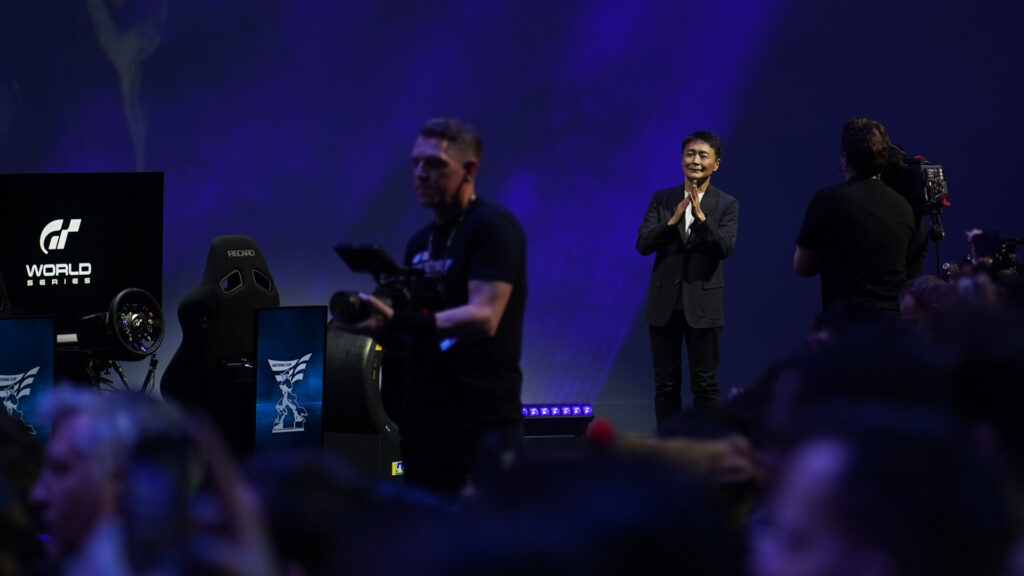
Consequently, the round table interview session (attended by Traxion) with Kazunori Yamauchi resulted in a tightly controlled environment – specific game or content questions by fellow journalists from around the world were batted away.
Yamauchi was calm. The industry veteran either provided concise, well briefed, answers or animatedly talked through his hands and beaming smile. Either way, he was not answering the big questions that day.
But, he was more than happy to discuss the embryonic stages of his career in video games, and where sim racing has perhaps gone in the wrong direction…
30 years of PlayStation, and a desire to make movies
Gran Turismo, the first Gran Turismo, was released in December 1997 for the original PlayStation and thus began 27 years (and counting) of a tentpole racing video game series. We recently listed Gran Turismo 2 as the greatest racing game for that PSX device.
Except, it actually started over 30 years ago when the little-known, Japan-only, karting game Motor Toon Grand Prix was launched at the same time as Sony’s inaugural console.
The Japanese electronic giant’s – perhaps best known at the time for popularising the enjoyment of music while on public transport – move into the video game market is well trodden.
Following a brief alliance with Nintendo, the two went their separate ways, with Sony creating a skunkworks team to combine its hardware and CD manufacturing abilities.
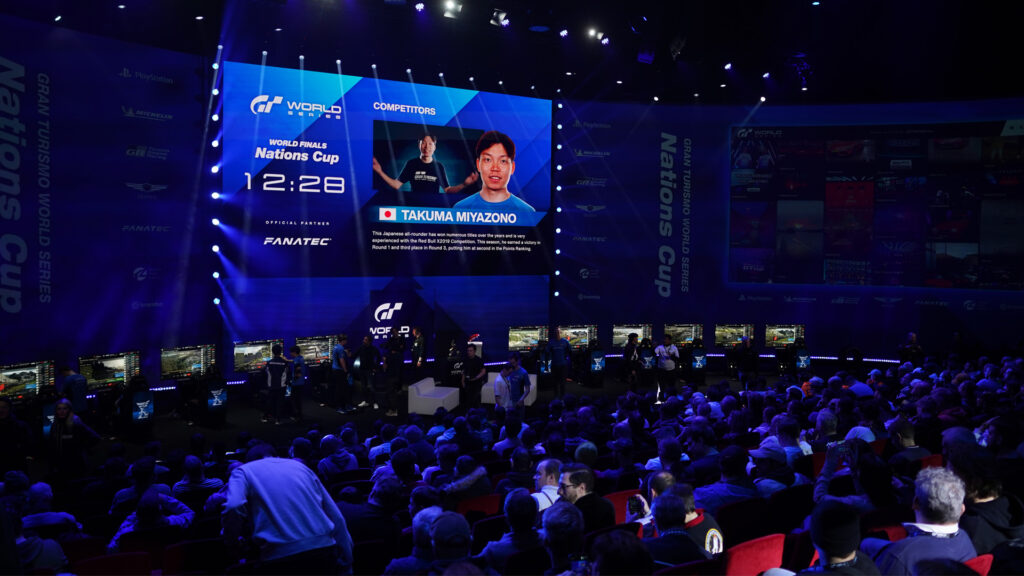
Somewhat fortuitously, Yamauchi arrived on the project at the right time.
“It began 30 years ago, when the PlayStation was just being started up, that’s when I actually joined the company,” he fervently explained.
“I originally wanted to make movies, but for some reason, I was placed into a division that was starting to make video games.
“In 1992, if you think about it, if I was someone who wanted to make video games, I wouldn’t have joined Sony. You would have gone to one of several other companies.
“But, I learned that there was a really small department working on making video games and from there, that small section grew to become the division that makes PlayStation, and it was when [Ken] Kutaragi slid out of Sony to join that group.”
When the grey, rectangular, device launched on 3rd December 1994, few would have predicted the impact it would have on home entertainment.
Following the aforementioned Motor Toon Grand Prix came a sequel, this time released worldwide, before, three years later, the initial GT.
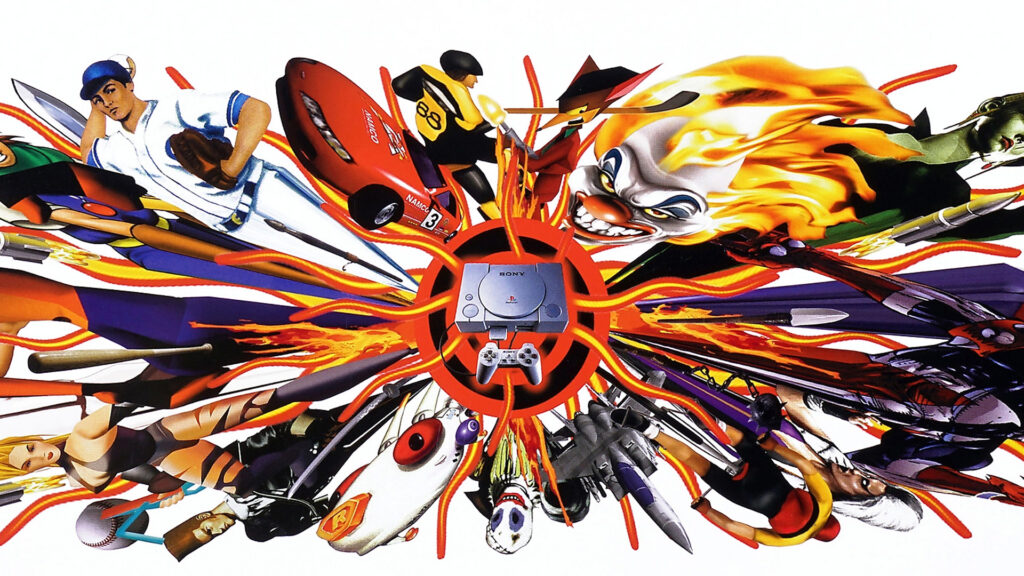
Starting with a diminutive team, by all accounts, it was a fast-paced area, a cadence that continues to this day according to GT’s Series Producer.
“I started making video games just by chance, and Gran Turismo was just one of the 100 or so titles that I had imagined and made a project plan for,” continued the game designer.
“I started the project with one part-timer to work on it with me, and I gradually increased those numbers to make Gran Turismo.
“From there until now, it’s always been difficult, always been busy, all throughout the years.
“My First Gran Turismo was a big challenge for us, and [so was] making the game [Gran Turismo 7] compatible with the PS5 Pro, that was a lot of work as well.
“When I was young, I used to think ‘Man, I’m so busy’, but now I still think I’m really busy.”
How sim racing needn’t be so difficult
The Gran Turismo games, and GT7 in particular, neatly tread the line between what some call ‘simulation’ (or sim racing) and ‘arcade’ (let’s say a more accessible experience).
You can drive, and enjoy, it with a gamepad, but it also becomes more rewarding with a steering wheel peripheral. That balance is a dark art, that some games struggle to master – either feeling completely numb when a steering wheel is in use or making it impossible to be competitive with a controller.
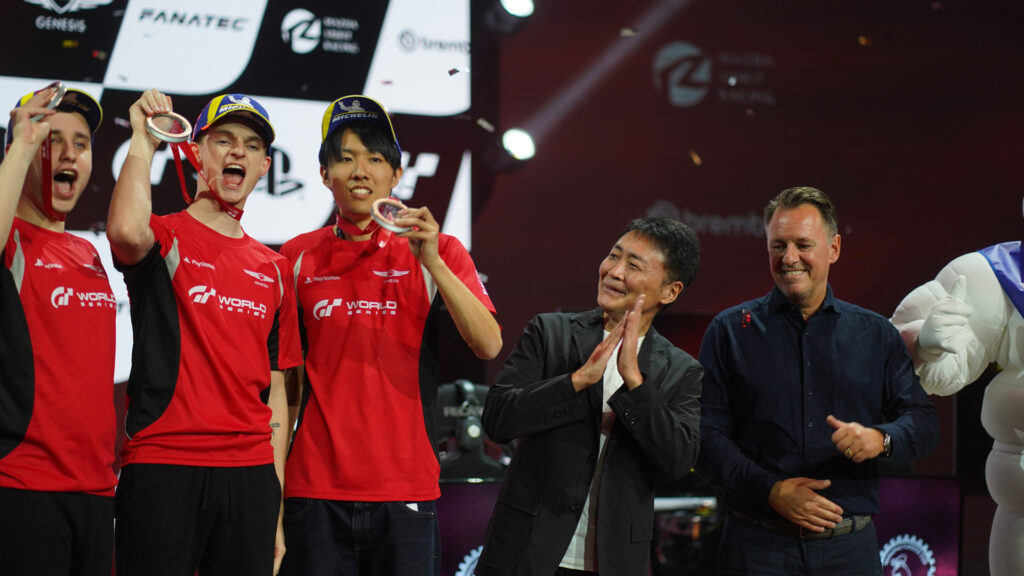
According to Yamauchi, Gran Turismo succeeds by still pushing the boundaries of simulation vehicle physics, before layering on top a more accessible car set-up and optional driving assists.
“When we’re talking about physics, we’ve never made the physics focus on entertainment or make the car easier to drive than it is in real life,” the deified developer explained.
“Even still today, the physics simulation in Gran Turismo is the cutting edge in driving simulation. The set-up of the car is made so that anyone can drive it fairly easily, especially racing cars. [It’s designed to] have slight understeer because, for a beginner driver, the most difficult thing to control is when the rear starts sliding out.
“The suspension set-up and the brake balance are all set up initially so that it’s easier for the beginner driver. We also have a lot of different driving assists such as traction control, stability control and steering assist. It’s made so that if you turn those features on, it’s easier to drive.
“For a more professional level driver that wants to have a high-level experience, they can turn all those assists off and then change the [car] settings so that if it’s a driver that prefers a car that oversteers a little bit more, then, we have the freedom to be able to set the car up to what you prefer.”
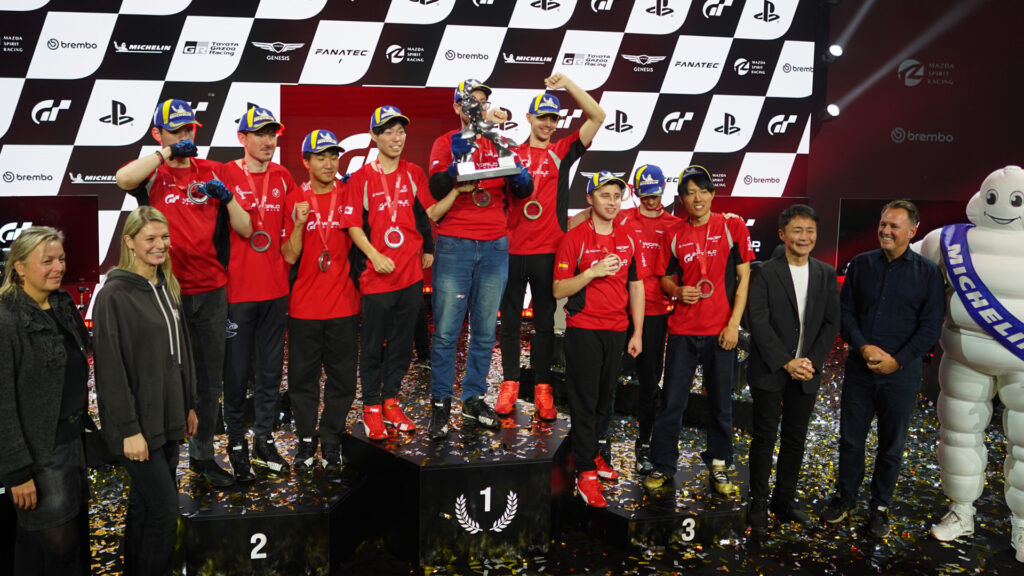
However, the driving game auteur is clear that even if other available platforms may seem more challenging to drive than say Gran Turismo 7, that doesn’t necessarily mean that their underlying physics system is more true to life:
“I think in the sim racing world there’s a big misunderstanding over the last 20 or more years, where racing cars, real racing cars, are actually really easy to drive.
“[They are] actually much easier to drive than a production model car because otherwise you wouldn’t be able to race at those speeds on the track.
“Somewhere down the line it became this thing where it being difficult to drive is realistic, and that’s not true at all.”
The rapidly vanishing window of opportunity to quiz one of the genre’s defining characters ends with some quick thoughts about artificial intelligence, “GT Sophy development is still ongoing”, the World Series competition, “creating these incredible races completes Gran Turismo” and the potential for upcoming updates for its most-recent launch, “we also want to continue to update My First Gran Turismo.”
And with that, our time was up. Now we wait patiently to see what 2025 may bring for Gran Turismo.





Chat with the Community
Sign Up To CommentIt's completely Free